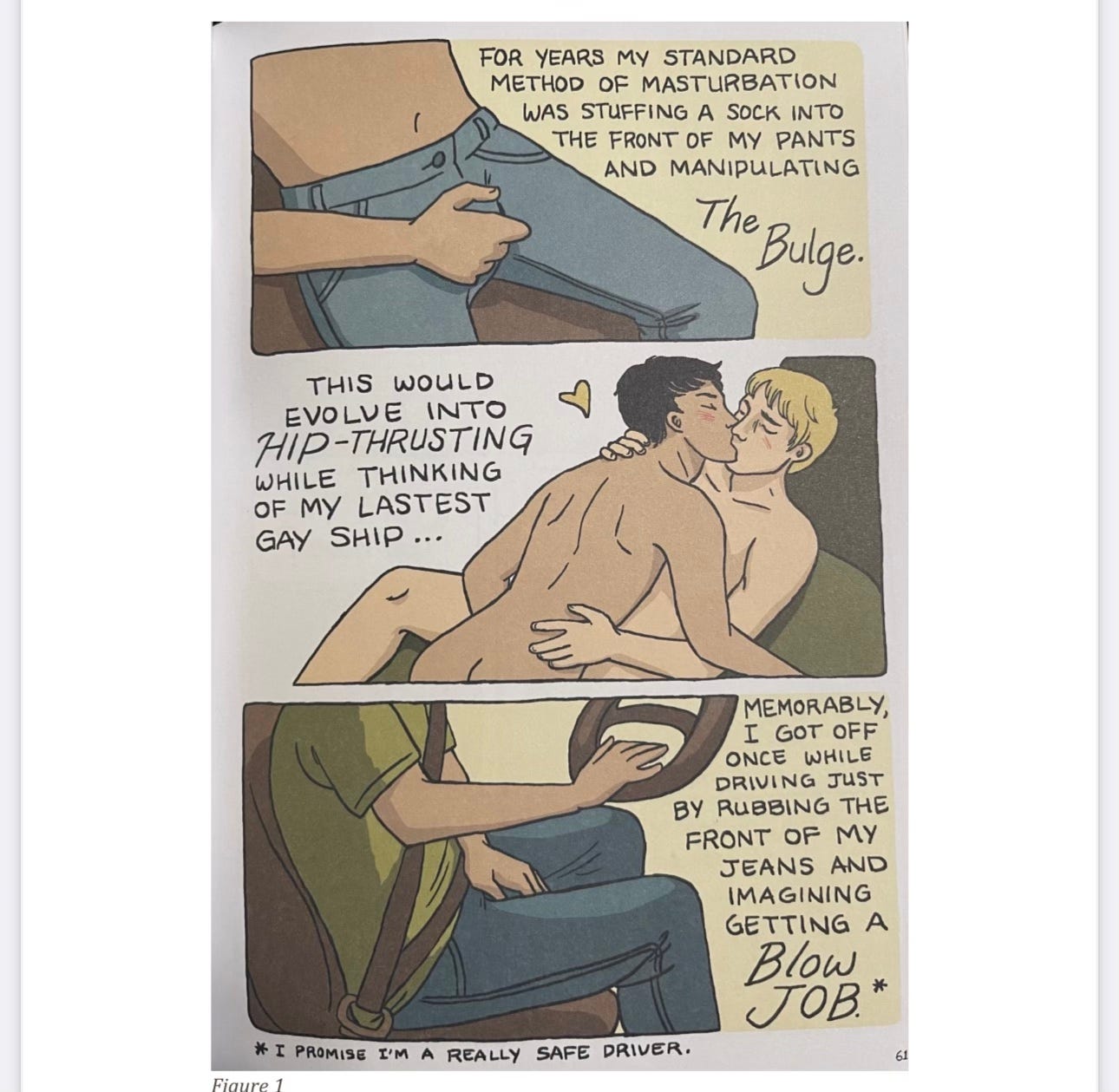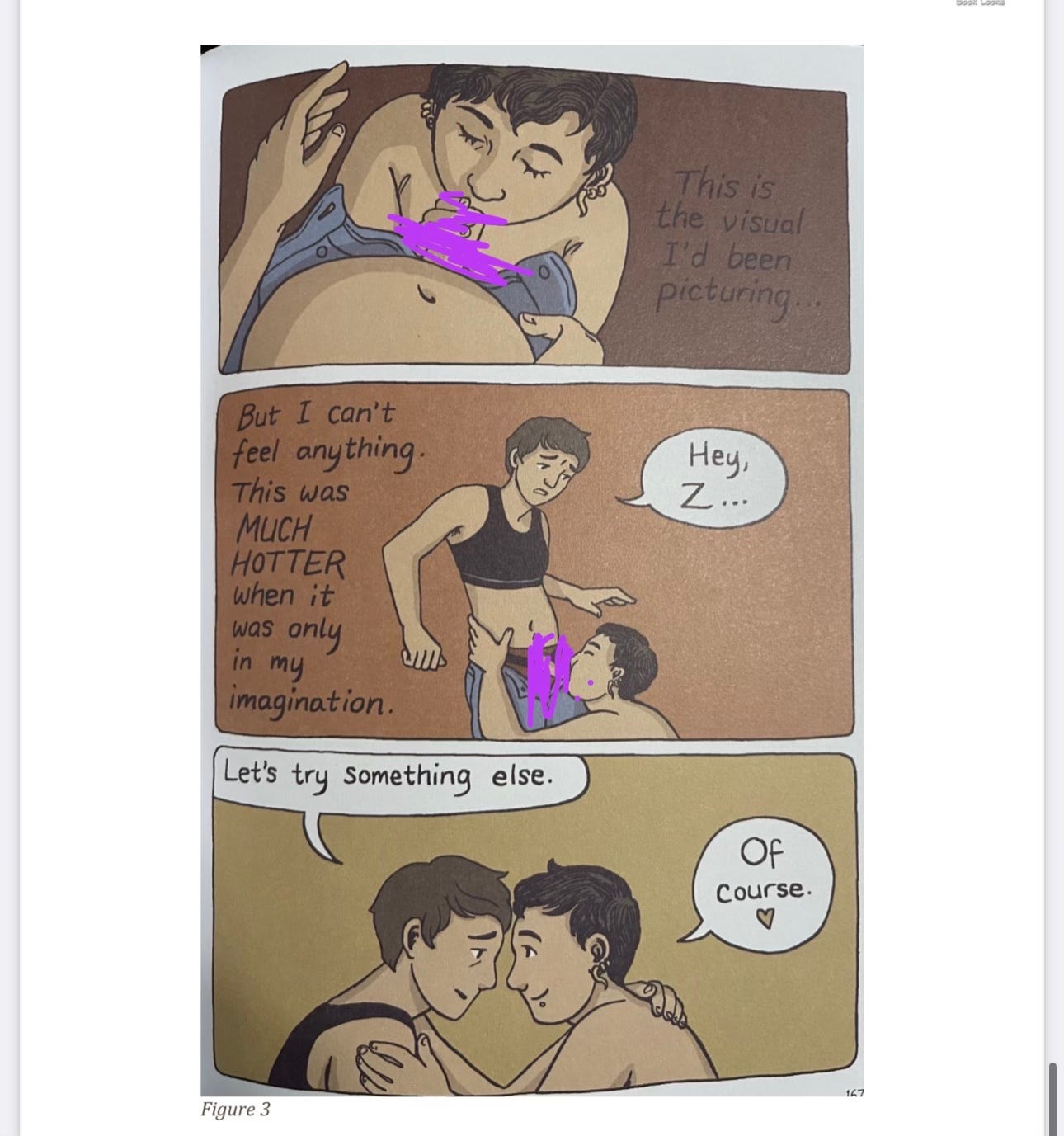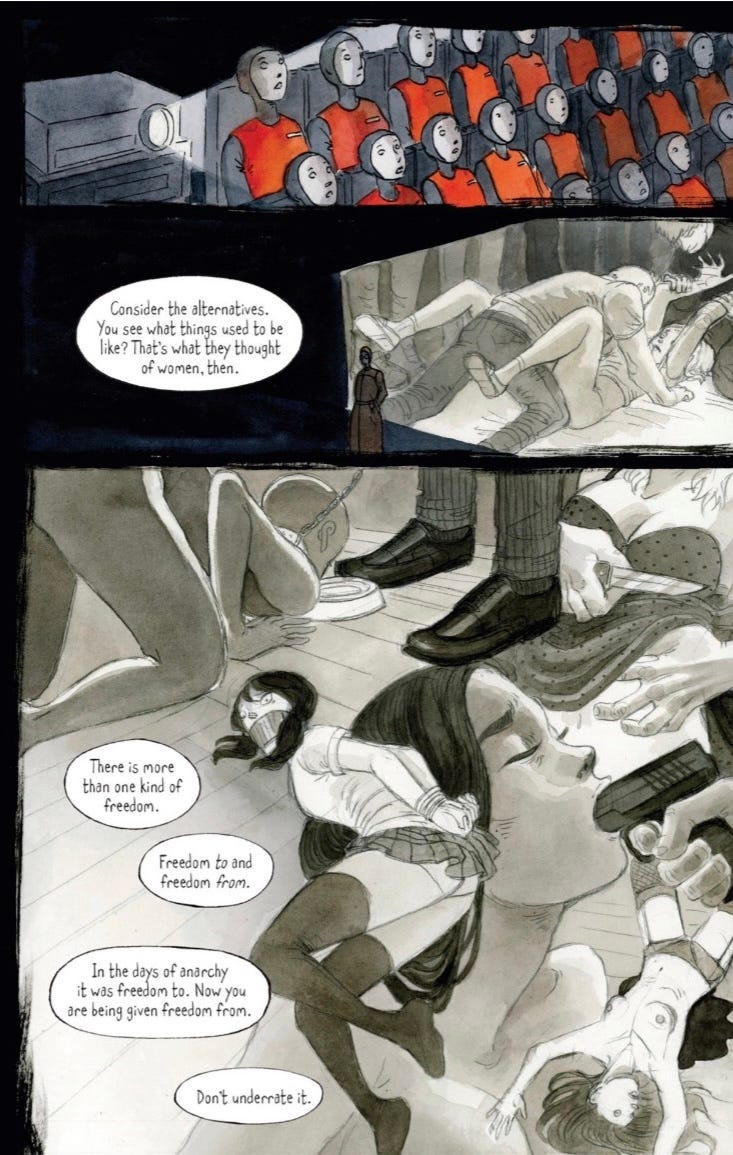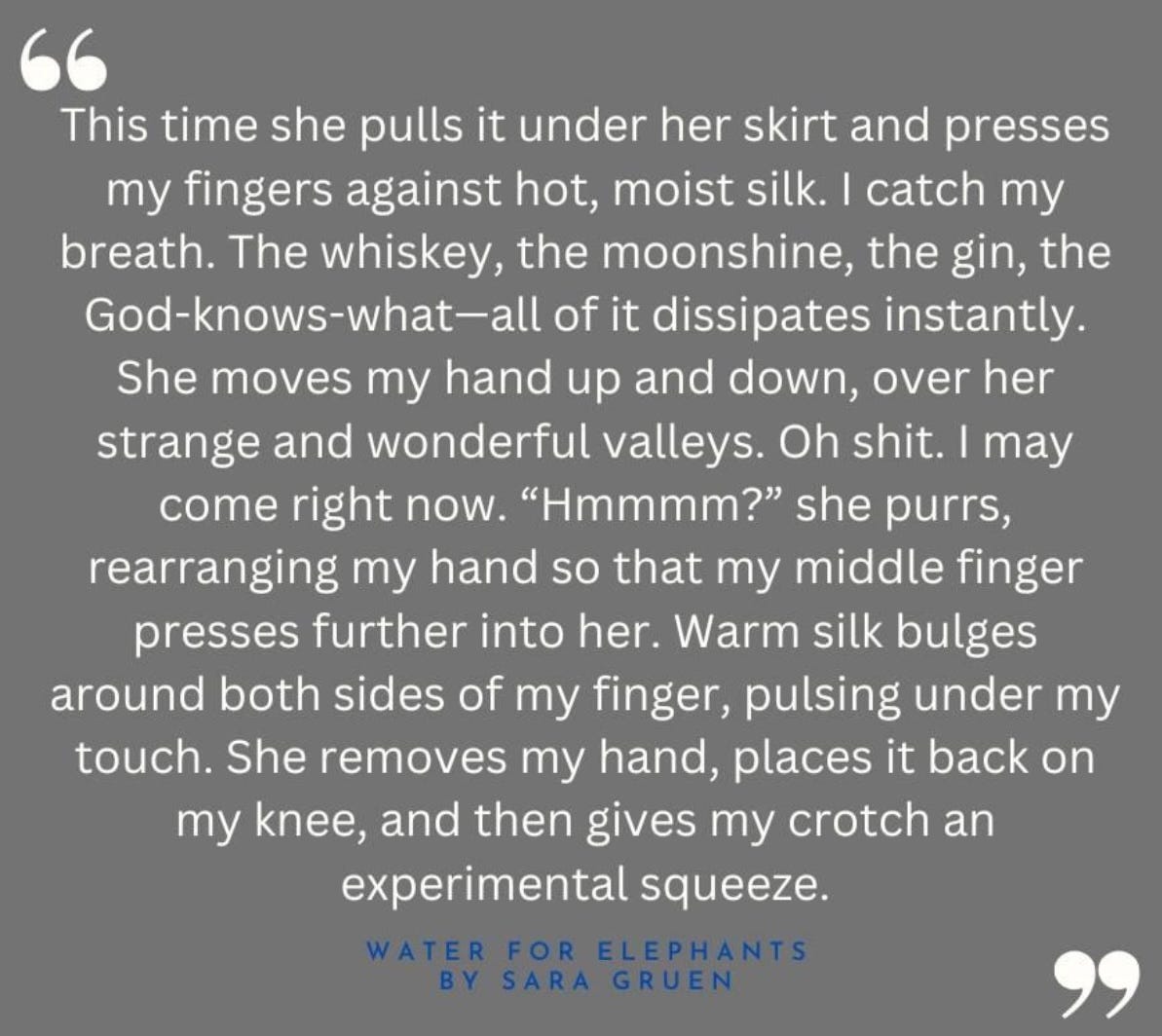What’s In Your Public School Library?
Editor’s Note: This article originally appeared as part of a three-part series in July 2023 on WBDaily.com. It has been reformatted to reach a wider audience.
While graphics and text within this post may be offensive to some readers, the content’s inclusion is intentional, informational and based upon its deemed acceptance by public school officials for student consumption in public school libraries.
With the new school year, two things are sure to continue: the battle to keep sexually explicit content in public school libraries and the need for ongoing vigilance.
This cultural battle prompts curiosity on the availability of sexual content in public school libraries. And it begs a logical question. Do parents know what’s in their public school libraries?
A legislative win prompts a new battlefront
The recent Texas legislative session produced a victory with House Bill 900, also known as the READER (Restricting Explicit and Adult-Designated Educational Resources) Act. This bill, set to take effect Sept. 1, will direct the Texas State Library and Archives Commission, in consultation with the State Board of Education, to adopt standards for public school library collections.
These standards will restrict the inclusion by libraries of harmful material and other sexual or patently offensive content as described in the Texas Penal Code. Vendors will be responsible for rating and appropriately labeling the books.
The bill charges vendors as follows:
A library material vendor may not sell library materials to a school district or open-enrollment charter school unless the vendor has issued appropriate ratings regarding sexually explicit material and sexually relevant material previously sold to a district or school.
In addition to implementing the rating system and restricting future sales, vendors must also recall previously sold sexually explicit-rated materials in active use by districts or schools no later than April 1, 2024.
The lawfare begins
Naturally, pseudoporn peddlers are fighting back and a legal complaint has already been filed.
Per the coalition of booksellers, authors and publishers having filed the suit:
The Texas law replaces the long-established rights of local communities to set and implement standards for school materials within constitutional boundaries, and forces private businesses to act as instruments of state censorship on controversial topics under threat of retaliation. Companies that insufficiently comply will be subject to censure through a public listing and Texas schools will be prohibited from purchasing any books from them in the future. The plaintiffs have asked the Court for preliminary and permanent injunctions to enjoin the implementation of the law, which has been signed by the Governor of Texas and is slated to go into effect on September 1, 2023.
“Having fought against sexually explicit content in schools for the past 18 months, I fully recognize the far left will do anything to maintain their ability to sexualize our children,” bill sponsor Rep. Jared Patterson, R-Frisco, responded in a statement which also cited anticipation of such a suit.
“To Texas parents and taxpayers who have fought along our side, I say we are neither surprised nor unprepared,” he continued. “To those standing against Texas schoolchildren I simply say, bring it with everything you have because I don’t want to hear any excuses when we put the final nail in the coffin of your woke agenda.”
A quick primer on today’s sexually explicit books
Graphic text and/or images are featured in the library books addressed by The READER Act. Much “noise” surrounds the content of these books. Critics charge the parents speaking out as being prudish or puritanical, maybe even a bit too Christian. Let them say what they will. The public should judge for itself. Note also that while all content is not equally explicit in its nature, different books address different topics and topic treatment worthy of review.
These screenshots provide examples of the graphics within some of the commonly concerning library books. They either are or have been removed in one or more Bell County schools.
Screenshot “Gender Queer”
Screenshot “Gender Queer”
Screenshot “The Handmaid’s Tale”
The following passage (p. 29-30) from author Alana Arnold’s Red Hood is representative of text found in novels geared toward middle and high school libraries.
There is the pelt of your pubic hair. You keep it trimmed close and neat around the edges, but you like the way it looks and have bucked the fashion magazines that advise you to shear it completely. There is the nub of your clitoris, and again you push away the memory of what James did last night with his tongue. With your right hand, you pull apart the lips of your vagina, and with your left, you angle the tampon toward its opening. You are slick with blood, and so the tampon slips in easily. You push until you’re knuckle-deep in your own body, the first time you’ve touched yourself like this- though you have rubbed your clitoris and touched the outside, you’ve never put your fingers inside, somehow feeling like it was not right, like it would be trespassing.
It’s warm in there, almost hot. It feels like what it is- a muscular tube, made of flesh.
The thrust of your small breasts. Nipples that seem darker than you imagine they should be, the right one smaller than the left.
You are not going to tell your grandmother about the feel of James’s mouth between your legs. You are not going to tell her about your orgasm in his old blue wagon, or about the moonbeam that illuminated his face just as he looked up to see your pleasure on your face and showing you your blood on his.
Here are other examples:
Screenshot “Water for Elephants”
Screenshot “What Girls Are Made Of”
In addition to ongoing legal gamesmanship, advocates seeking to keep traditionally adult content in children’s libraries have also deployed an information operation.
“Book Ban” crowd gears up for a new school year
The American Library Association is already promoting its annual Banned Books Week. The event, ironically a project of its Office for Intellectual Freedom, might be contributing to states severing ties with what’s increasingly seen as a Marxist organization.
But in the spirit of intellectual freedom, let’s inject some honest analysis to the “book ban” discussion which is, at best, a silly argument. To begin with, it’s not only void of historical context, but a position transparently designed to inflame and promote an emotional response rather than a mature discussion about a serious subject.
While our use of the term “pseudoporn peddlers” could similarly be viewed as inflammatory, the terminology’s factual accuracy is evident as shown in this series’ first part with even the briefest review of the content at issue. Historic book bans in no way correlate to the concerns expressed and actions sought today.
Book bans, as with other forms of censorship, are about control. With that, the education-industrial complex (EIC) – which includes organizations such as the ALA and Texas American Federation of Teachers – wants to position “book banners” (aka parents and other concerned parties) as intrusive and unqualified to weigh in on children’s education. Of course, this is the industry also seeking to intimidate the public via its purported, self-promoted guise of professionality (i.e., educators know best).
As HB 900 was being debated, the Texas AFT stated:
Books highlighting LGBTQIA+ experiences and perspectives are already frequent targets of book bans in local school districts statewide. Librarians worry that this proposal would further limit their ability to educate. The vague terminology about what is considered “harmful” materials in the bill would likely have a chilling effect on teachers. Texas AFT opposes both SB 13 and HB 900.
With the passage of the bill, Texas AFT published a report on Katy ISD’s efforts to comply with the new law. Per the article, though bill sponsor House Rep. Patterson “alleges” the bill is not designed to be a book ban, “numerous public education advocates including Texas AFT stated that the bill would effectively ban books that focus on Black, Brown, and LGBTQ+ experiences, regardless of the intended effect.
The article goes on to discuss how the district has halted book sales and is exploring options until the logistical ramifications of this new legislation settle out. No doubt many, if not most, of Texas’ 1,000+ districts are addressing the same situation and if districts are as accomplished as we’re routinely told, they’ll handle it.
The takeaway from this article is three-fold.
Texas AFT well illustrates the EIC’s manic need for operational and cultural control of its domain as well as an indignation of challenges to its authority through legislation like HB 900. Besides Texas AFT, this attitude is evident within organizations like the Texas Association of School Boards (TASB) and the Texas Association of School Administrators (TASA). Responses to library book pushback have revealed similar attitudes often within local ISD administrations and even down to the campus level.
The EIC resents forced adaptation to this new dynamic (HB 900), one to which the EIC is ideologically opposed and has been blocked from dictating the rules.
As school districts temporarily halt book purchases, this financial disruption negatively impacts the EIC internal ecosystem and that is never acceptable.
Propaganda exposed
Those who ban books are generally the bad guys and must be thwarted by – you got it – the good guys. It’s why the term is being misused and why it’s so important to push back with regard to library book content.
A final note about the Texas AFT/Katy ISD article illustrates this point. It concludes:
This is not the first time that Katy ISD has been in the news for banning books. Last year, the board changed district policy to require parent permission for secondary students to check out classroom library books. In response to the increased scrutiny, one Katy ISD teacher went as far as to remove all “Young Adult” books from her classroom library to avoid controversy.
Notice how the actions described hardly match up with the “banning books” allegation.
Texas AFT seems a fan neither of this district nor parental involvement. Never mind acting in what appears a good faith effort focused on serving the needs of constituents (students, parents, taxpayers and voters). This board must be exposed for its sins. Let’s remind the world that Katy ISD is nothing but a bunch of bigoted book banners!
And though the article does depict Katy ISD’s pragmatic response to implementation of the READER Act, anyone viewing only the “In Response to Book Ban Bill, Texas School District Halts All Book Purchases” headline and the “Come and Take It” graphic would get a significantly different impression.
Sleazy or sloppy? Hard to know, but either way, there’s a term for this type of communication. Propaganda!
Historically, people who want to ban books are fascists or other authoritarians. Per the EIC, parents and other concerned parties want to ban books. Banning books is bad. Therefore, parents and other concerned parties must be bad. And as that leaves an opening for the good guys, enter the EIC standing ready to protect your children.
Starting to see how it works?
Book banning mythology
Ban the books? Quite the contrary. There is, however, a thing of which some of us are big believers. It’s called freedom.
Let the books exists. No one is arguing that. Authors should write the books. Publishers should print the books. Consumers desiring to buy the books should do so.
Recognize though that as an exercise of freedom, there is an appropriate time and a place for these books as well as a time and place where people can choose to be free fromthis content.
There seems strong agreement that childhood is not the right time and a public school is not the right place. And in what discerning society would education bureaucrats be tasked as arbiters of sexualizing children?
A quick side note. Let’s also remember that taxpayers, not education bureaucrats, fund public schools. Dominating a public school fiefdom may be a heady experience, but don’t forget who pays the bills.
Parents, free to take exception with their children’s exposure to this content, aren’t unyielding book banners. They are responsible adults seeking to protect students’ emotional and mental health. That’s the point, the point that seems purposefully ignored.
Those who seek to portray concerned parents and others are “book banners” do so with the intent of mischaracterizing the effort. It’s an attempt to sidetrack the real issue – the book content and the effect such content portends for students.
Silliness has occurred with the potential (or sometimes actual) removal of classic titles like A Midsummer Night’s Dream, Romeo and Juliet, Of Mice and Men, Anne Frank’s Diary: The Graphic Adaptation. These are not the issue and trying to make them so smacks of a thinly veiled ploy to provide a deflective talking point.
Bottom line. Don’t be fooled by the calculated effort to distract and mislead from the important conversation.
Age restrictions abound
Many activities are regulated based on age. Most public school students are minors (under the age of 18) and with that, their access to various activities and items is restricted. Why does the EIC think sexually explicit library books should be an exception?
What type of things are restricted? Everything from voting and enlisting in the military or getting married without parental permission to signing a legal contract, opening a bank account, buying a car or even giving consent to medical care.
Age restriction workarounds
Accessing adults-only stores and content has traditionally been another restricted activity, however, a convenient workaround now exists with the pseudoporn content currently available in many public school libraries.
Drag queen story hours and subsequent all-age drag shows – sometimes privately held, but often with school, public library or other government institution sponsorship – have served as another offshoot for exposing minors to traditionally restricted adult entertainment.
“A Drag Queen Christmas” sparked controversy last year as the troope toured several Texas cities. Per Texas Scorecard:
“That was the most sexual and inappropriate ‘family friendly’ drag show I have ever attended,” independent journalist Tayler Hansen said of the event.
In the Austin show last December, a crossdressing male performer danced around stage with a box on his chest that displayed his fully nude, fake breasts.
Another performance in the Austin show was titled “Screwdolph the Red-nippled Reindeer.” This performance simulated sex for audience members, with performers humping each other, grinding, and shoving their faces in each other’s fake breasts.
In response to growing public concern, SB 12 will also go into effect Sep. 1. The bill regulates sexually oriented performances and restricts those performances on the premises of a commercial enterprise, on public property or in the presence of an individual younger than 18 years of age. It also institutes penalties that can include up to a $10,000 fine per violation for the hosting businesses while performers and participants can face misdemeanor penalties.
After analysis of minors’ access to sexually explicit content (excerpts included) in public schools and recognizing the ongoing information operation underway seeking to keep these materials in children’s libraries, we finally take a look at American content moderation systems currently in use along with uncomfortable truths regarding the sexualization of minors.
Content moderation v. censorship
The left loves when media or other platforms and industries ban the speech or other activities of those with whom it disagrees. While that’s called censorship and it’s a violation of the Constitution, practical levels of content moderation occur daily. And they’ve long been seen, in many cases, to have a productive place in American society.
The Federal Communications Commission regulates interstate and international communications through cable, radio, television, satellite and wire. The limitations on the FCC’s power to restrict or ban speech begin with the First Amendment to the U.S. Constitution. While the FCC cannot censor broadcasts, it can impose certain restraints with regard to indecency, obscenity and profanity on the air.
The Motion Picture Association rating system sets age restrictions for movies. Jack Valenti, former Chairman and CEO of the MPA, established the system in 1968.
“Jack forged a dynamic program that would provide American parents with a reliable and easy-to-use tool to help them make viewing choices for their children, while also protecting the First Amendment rights of filmmakers and the creative process,” current MPA Chairman/CEO Charles Rivkin writes of Valenti’s effort. “He also had the good sense to form a partnership with the exhibitor community, represented by the National Association of Theatre Owners (NATO), which is on the front lines of American families’ reactions to movies and ratings.”
The Recording Industry Association of America uses its “Parental Advisory Explicit Content” label for music albums and digital/online music downloads (including podcasts) containing sexually explicit or violent references in lyrics, foul language or drug/alcohol abuse references.
Akin to the MPA, the RIAA says this of its system:
The PAL program is a voluntary initiative for record companies and artists, permitting them greater freedom of expression while also giving them the opportunity to help parents and families make informed consumption decisions.
Record companies work directly with artists to decide which releases should receive a PAL Mark to indicate explicit content or otherwise be identified as explicit. In some instances, the artist may re-record certain songs or revise lyrics because a creative and responsible view of the music demands such a revision.
The PAL program was established in 1985 as the RIAA worked with the National Parent Teacher Association and the Parents Music Resource Center (Tipper Gore) to address concerns about explicit content in sound recordings.
The organizations reached an agreement that certain music releases containing explicit lyrics, including explicit depictions of violence and sex, would be identified so parents could make intelligent listening choices for their children.
Similarly, the Entertainment Software Rating Board (ESRB) was founded by the Interactive Digital Software Association in 1994. The rating system has evolved with the video game industry and is currently divided into three parts: Rating Categories, Content Descriptors and Interactive Elements. The ESRB cites its primary mission as “to help parents make informed decisions about the video games and apps their children play.”
Why aren’t school libraries another venue in which minors should be protected?
And seriously, what’s up with the schoolbook publishing industry and its education-industrial complex (EIC) compadres? Why can’t (or won’t) these stakeholders play a role in their industry’s content moderation process?
Not just a lack of interest, but resistance to aiding parents in content consumption decisions for their children is troubling. Is it ineptitude? Laziness? Or is it ideologically driven with the nature of that ideology pointing in a dark direction?
Who benefits from the ongoing availability of sexually explicit content in public school libraries? Whose interests do sexualized children serve?
The curious motives of provocative book promotion
When sexually explicit content advocates cite these books as reflective of community standards, one has to wonder to what community these people belong?
Then there’s the who, what, when, where and why. The who and the what are easy. It’s the kids and the books. School children exposed to adult-themed, sexually oriented books. The when and the where become more troubling. K-12 students are generally fall into the 5 to 18 age range. These are formative, impressionable years. And as for the where, it’s in the schools – venues that for years have positioned themselves as safe spaces. And finally the why. That’s the tricky one.
If someone argued that any reading material can be an enhancement to learning skills, that would at least be an arguable position. Yet today’s “educators” never address that point. So then why are these books in these libraries? If not to improve reading skills, what’s the motivation? The goal?
Uncomfortable truths
Explicit book advocates argue the importance of exposing children to diverse sexual and gender orientations. Why would any rational adult think a contemplative presentation of this information to a young audience wouldn’t stimulate an action-oriented response? Or maybe that’s the point.
With growing numbers of school personnel arrests on sexually related charges, the whypoints in another disturbing direction. Think back to the chicken and the egg dilemma. Consider school personnel as the chicken, sexually explicit library content as the egg. Is one contributing to the other? And not to say in all cases, but perhaps in at least some. The answer, to us, is unknown, but the question is worth asking.
And then we come to “Sound of Freedom,” the cinematic outlier that was a struggle to make, release and place in theaters yet it’s holding its own if not even financially outpacing some of the season’s top box office draws.
“Sound of Freedom” tackles the disturbing and heart-wrenching topic of child sex trafficking. It addresses the sexualizing of children, some at grotesquely young ages.
Per the movie, Mexico is the biggest supplier of child sex industry workers with the U.S. its biggest consumer. Are we trying to compete with home grown workers? Perhaps horrifying to say, but one has to wonder.
Make no mistake. The U.S. has a pedophile problem and shouldn’t we be doing all possible to protect children from such exploitation?
Per The Daily Signal, the following “reflects the most common entry points for children being pulled into child trafficking.”
On average, a child enters the U.S. sex trade at 12 to 14 years old. Many are runaway girls who were sexually abused as children.
Most of the time, victims are trafficked by someone they know, such as a friend, family member, or romantic partner.
Predators can rent a child for a single sex act for an average of $90. Often, that child is forced to have sex 20 times per day, six days a week.
Trafficking usually occurs in hotels, motels, online websites and at truck stops in the U.S.
About 50,000 people, primarily from Mexico and the Philippines, are trafficked into the U.S. annually.
According to the Federal Human Trafficking Report, “In 2018, over half (51.6%) of the criminal human trafficking cases active in the U.S. were sex trafficking cases involving only children.”
Traffickers use social media platforms to recruit and advertise victims of human trafficking, according to anti-trafficking advocates.
Christianity Today similarly reports:
Traffickers in the US usually traffic people that they know, according to statistics from Polaris, an anti-trafficking organization that runs the US National Human Trafficking Hotline. Polaris describes the “top three recruiter types” as family members or caregivers, intimate partners, and employers.
Tim Ballard, upon whom the Sound of Freedom was based, said this to The New York Post:
“I spent 10 out of 12 years on the Southern border and to know what’s happening, you have to understand the economy of pedophilia,” he said. “The US is the number-one consumer of childhood rape videos in the world. We are now in the top one or two for production. It used to be more foreign based.”
He described to Nancy Flory at The Stream how “woke ideology is running parallel with pedophile doctrines.”
“We’re sexualizing our kids. …We’re giving kids pornography and calling it sex education. I used to arrest people for distributing material to children. … Now it’s celebrated. So these little minds, the brain’s not even [developed] yet. They’re becoming sexualized beings.”
Final thoughts
Taking children to strip clubs isn’t acceptable. Exposing them to pornographic movies, at least for now, is another taboo. Why are these activities forbidden, yet sexually explicit books are okay simply by virtue of being in a public school library?
All three examples involve content or activities of a mature, sexual nature from which our society has traditionally shielded minors. Some schools have invited adult-themed drag queen performances into their facilities. While unaware that we’ve started showing pseudoporn movies, what would be the EIC response? If it happens on school property it’s okay?
And how far do we go? Are today’s library book topics just the beginning? Incest and sexual assault are already in the books. What’s next? Hyper-sexualization at an early age helps foment a dangerous downward slope life trajectory. One that can have lifelong consequences.
The education-industrial complex always tells us “it’s for the children.” At a point you have wonder just what “it” truly is that they’re seeking to do.
Lou Ann Anderson worked in Central Texas talk radio as both a host and producer and currently hosts Political Pursuits: The Podcast. Her tenure as Watchdog Wire–Texas editor involved covering state news and coordinating the site’s citizen journalist network. As a past Policy Analyst with Americans for Prosperity–Texas, Lou Ann wrote and spoke on a variety of issues including the growing issue of probate abuse in which wills, trusts, guardianships and powers of attorney are used to loot assets from intended heirs or beneficiaries.









